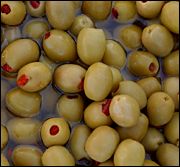Whether you accept it, avoid it or live somewhere in between, insurance coverage has become a defining issue for our profession. Patients increasingly expect to use their benefits, practitioners want to be compensated fairly for their time and expertise, and the system itself remains – at best – fragmented. The encouraging news is that coverage has expanded in meaningful ways. The challenging news is that reimbursement, across the board, remains inadequate.
Vitamins, Minerals and Dietary Supplements
Olive Leaf Extract
What is olive leaf extract? Why do we need it?
Also known as oleuropein, olive leaf extract comes from the leaves of the olive tree. There are approximately 800 million olive trees in existence, the vast majority of which are located in and about the Mediterranean region. Olive leaf extract is usually extracted from the leaves of the Mission and Manzanillo varieties of olive tree.
Olive leaf extract has been shown to demonstrate antibiotic, antibacterial, antiviral and antifungal properties. When ingested, olive leaf extract is converted by the body into elonolic acid, which helps strengthen the immune system. It has been prescribed to treat a number of infectious conditions, including chlamydia, strep throat, herpes and yeast infections. Other practitioners have used it to treat chronic fatigue syndrome and fibromyalgia.
How much olive leaf extract should I take?
 The typical recommended dose of olive leaf extract is between 500 milligrams and 1,000 milligrams daily, usually for preventive purposes. For specific conditions, some practitioners may recommend between 2 and 6 grams per day.
The typical recommended dose of olive leaf extract is between 500 milligrams and 1,000 milligrams daily, usually for preventive purposes. For specific conditions, some practitioners may recommend between 2 and 6 grams per day.
What forms of olive leaf extract are available?
Olive leaf extract is available as a capsule or liquid extract.
What can happen if I take too much olive leaf extract? Are there any interactions I should be aware of? What precautions should I take?
As of this writing, there are no known side-effects associated with olive leaf extract. Because olive leaf extract can neutralize the effects of certain antibiotics, it should not be used while a person is also taking antibiotics. As always, make sure to consult with a licensed health care provider before taking olive leaf extracts or any other dietary supplements or herbal remedies.
References
- Bisignano G, Tomaino A, LoCascio R, et al. On the in-vitro antimicrobial activity of oleuropein and hydroxytyrosol. J Pharm Pharmacol 1999;51(8): 971-4.
- Gonzalez M, Zarzuelo A, Gamez MJ, et al. Hypoglycemic activity of olive leaf. Planta Med 1992;58(6): 513-5.
- Petroni A, Blasevich M, Salami M, et al. Inhibition of platelet aggregation and eicosanoid production by phenolic components of olive oil. Thromb Res 1995;78(2): 151-60.
- Visioli, F, Bellomo G, Galli C. Free radical-scavenging properties of olive oil polyphenols. Biochem Biophys Res Commun 1998;247(1):60-4.
- Zarzuelo A, Duarte J, Jimenez J, et al. Vasodilator effect of olive leaf. Planta Med 1991;57(5): 417-9.


